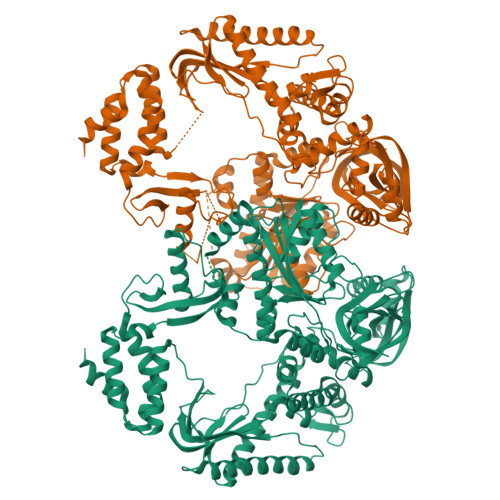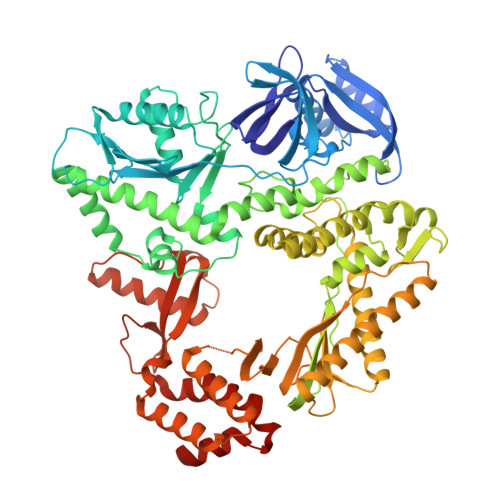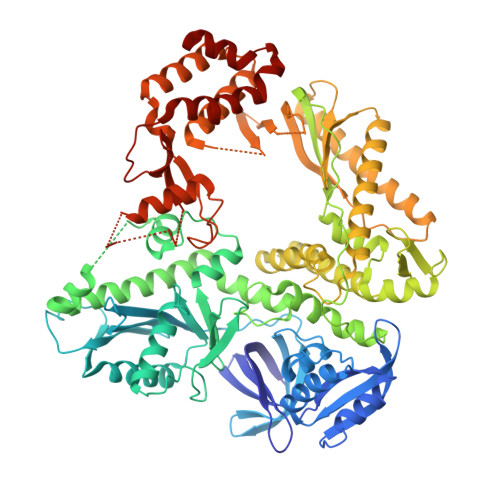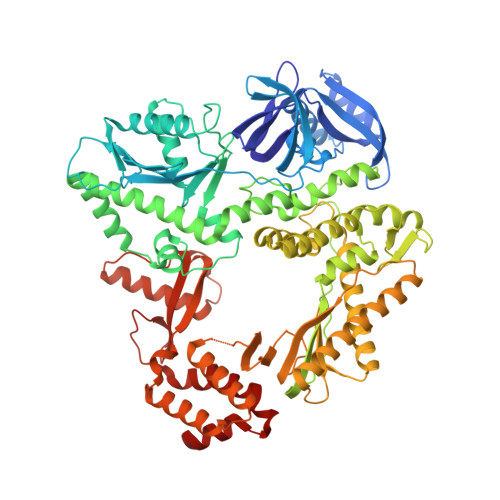Structural insight into translesion synthesis by DNA Pol II.
Wang, F., Yang, W.(2009) Cell 139: 1279-1289
- PubMed: 20064374
- DOI: https://doi.org/10.1016/j.cell.2009.11.043
- Primary Citation of Related Structures:
3K57, 3K58, 3K59, 3K5L, 3K5M, 3K5N, 3K5O, 3MAQ - PubMed Abstract:
E. coli DNA Pol II and eukaryotic Rev3 are B-family polymerases that can extend primers past a damaged or mismatched site when the high-fidelity replicative polymerases in the same family are ineffective. We report here the biochemical and structural properties of DNA Pol II that facilitate this translesion synthesis. DNA Pol II can extend primers past lesions either directly or by template skipping, in which small protein cavities outside of the active site accommodate looped-out template nucleotides 1 or 2 bp upstream. Because of multiple looping-out alternatives, mutation spectra of bypass synthesis are complicated. Moreover, translesion synthesis is enhanced by altered partitioning of DNA substrate between the polymerase active site and the proofreading exonuclease site. Compared to the replicative B family polymerases, DNA Pol II has subtle amino acid changes remote from the active site that allow it to replicate normal DNA with high efficiency yet conduct translesion synthesis when needed.
Organizational Affiliation:
Laboratory of Molecular Biology, National Institute of Diabetes and Digestive and Kidney Diseases, National Institutes of Health, 9000 Rockville Pike, Building 5, Room B1-03, Bethesda, MD 20892, USA.



















